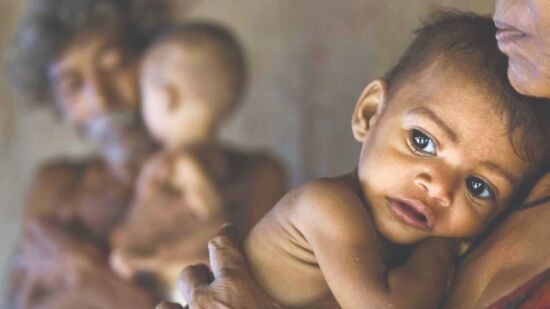Securing the foundation
If India is to fulfil its promised potential on the world stage, its lawmakers must completely reconsider the existing ineffectual public health/nutrition programmes

The first phase of NFHS 5 released on December 12, 2020, has a reference period of 2019-20 and covers 17 states and five Union Territories. The introduction contains a caveat — that readers should be cautious while interpreting and comparing the trends as some state/UTs may have a smaller sample size. I am informed that this is because in smaller States/UTs, the size of samples available for some indicators was very small, and therefore the generalised application of the data would be explained after the survey is completed and national data is announced.
Yes, stunting among children below five years has indeed increased drastically in several states, including the more progressive ones, such as Kerala and Goa and in some of the traditionally better nourished North East States, particularly Meghalaya, Nagaland and Tripura. But Bihar, a difficult state has shown remarkable improvement in reducing stunting, with rural data better than the urban data. In most other states, except Telangana, where stunting has increased, the position appears to be more or less static.
The percentage of wasted children in most states has also increased, the highest increases coming from Ladakh, Nagaland and J&K. Karnataka has shown remarkable improvement down from 26.10 per cent-19.5 per cent.
The drastic increase in stunting and wasting of children is an extremely serious issue, both epidemiologically and socially, and it would be important for the Government to enquire into the causes and take preventive measures immediately. It would also be useful to study whether the reduction in stunting is because children are steadily getting taller and then transitioning into the normal/underweight category or whether stunted children are losing weight and slipping into the wasted category. This would provide important insights into the real trends within these indicators.
However, the good news is that immunisation rates have gone up uniformly in all states and there has been a significant decrease in infant, child, and neonatal mortality rates. So too, the BMI of women and men between 15 to 49 years has improved substantially.
Anaemia remains a worrisome issue defying ongoing interventions, and in many states has increased among children, mothers, and women and men from 15 to 49 years. This has serious repercussions on cognitive and physical growth of children and adolescents, their learning ability and physical activity, and on the working and earning capacity of adults — in short, upon the quality of our human resources.
Another disturbing indicator which persists is the percentage of infants below 24 months receiving an adequate diet. In most states, it remains below 20 per cent, with only Kerala, Meghalaya, Ladakh, West Bengal, Sikkim and Goa having 20-30 per cent children receiving adequate diets, and Gujarat just 5.9 per cent. Not surprising, as ICDS coverage of supplementary nutrition is decreasing, and there is no affordable complementary food available in the market. Unless this deficit is addressed, the hard core of our underweight, stunted and wasted children will remain untouched.
A distinct urban-rural divide is also clearly visible in the data with almost all indicators being much worse in rural areas as compared with urban areas. Poverty and unemployment are fundamental to this divide, and perhaps because the economic impact of demonetisation was more severe on rural communities. The survey years follow two consecutive years of the impact of demonetisation on employment and wages, and of urban-rural migration among the rural poor. These issues need further research as also the effect of two consecutive years of floods in Kerala, of long curfews in J&K on food consumption by children, and of the demographic dynamics of growing migration from the Northeastern states and Bihar.
The initial data presents us with serious concerns which need urgent attention, primarily from the Government and policymakers, from whom we have not heard any comment yet. It is important that experts, practitioners, and policymakers, review existing programmes and their outcomes, especially the inter-sectoral interventions and platforms, and seriously examine why we are not able to make a dent on this silent, invisible malady which does not directly kill, is not infectious, and has no extraordinary symptoms except chronic fatigue and lesser cognitive and physical growth.
High burden and aspirational districts have the poorest development indicators and delivery systems, and lowest per capita income. They remain pockets of chronic poverty and malnutrition and clearly, additional targeted interventions within national programmes, through governmental or non-governmental sectors are urgently required. Will the policymakers take a relook and redesign public nutrition/health programmes accordingly, articulate new priorities, structure new interventions and obtain results? The foundation for becoming a world power, which we aspire to be, lies in the power of our human resources.
The writer is a former Secretary to the Government of India. Views expressed are personal



